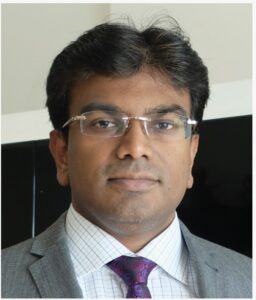Water scarcity is approaching immensely challenging proportions in the Middle East, owing to rapid urbanisation. Stakeholders provide an overview of the current state of water supply across the region, in the context of broad sustainability goals and projected demand from District Cooling. Hannah Jo Uy has the story…

Phillipa Grant
In the Middle East, one of the elements that gets neglected in conversations related to sustainability is water, says Phillipa Grant, Head of Energy & Sustainable Development, UAE-based consultancy firm, AESG. “Water represents energy here, because everything is desalinated, so when you think of water, you think about the amount of energy consumed to produce water, which is huge,” she says.
Most of the countries in the Middle East are already currently below the water- scarcity level set by the United Nations of 1,000 cubic metres/capita/year, adds Harry Istepanian, an Independent Power and Water Consultant based in Washington DC, United States, pointing out that the overall per capita freshwater availability in the Arab countries is at 800 cubic metres/capita/year. The situation is further alarming, in view of projected population increase, he says. “It is expected water availability will further decrease to reach about 500 cubic metres/year by 2030, when the Middle East region’s population will reach more than 500 million,” Istepanian says, adding that water will become a major constraint for development impacting the standard of living, health and agriculture.
Istepanian says that while water scarcity in the Middle East can be attributed to the region having the lowest freshwater resources per capita ratio in the world, as well as overwhelmingly arid climate and low levels of precipitation, the domestic water consumption rates in the GCC region, which is considered to be among the highest in the world, at an average per capita usage of 520 litres a day, serves as an additional aggravating factor. “And less than five per cent of the GDP of the Gulf region states comes from agriculture, but between 70% and 80% of annual water consumption is used for irrigation,” he points out. “Besides, the economic development in Gulf countries has also rapidly increased the industrial water demand and is currently growing at an annual rate of 20-25%.”
Speaking on water trends for the UAE alone, Istepanian says that the country has the highest rate of per capita domestic consumption globally at 550 litres per day, which is almost 50% higher than the United States, at 378 litres per day. “While access to clean, affordable water is a basic human right, the provision of water for comparatively low prices creates excess demand in the market and is a key factor in the high consumption patterns, not only for domestic usage, but also in industry and agriculture,” he says.
Istepanian says that to develop a long-term, sustainable approach to water management, Middle East countries need to gradually close the gap between the subsidised prices
of water and the production cost, which could incentivise people and companies to consume less. “For example, Abu Dhabi began implementing a stepped water tariff in 2017, which charges consumers a higher price when they consume past a certain rate and adds an additional surcharge for residences without water meters,” he points out. “Although reduced water consumption will not in itself solve the problem of water scarcity, it will allow the governments to buy more time to develop comprehensive, sustainable water policies and, in the meantime, help influence a broader shift away from excess consumption of water and energy.”
CHALLENGES IN THE CONTEXT OF DISTRICT COOLING
The issue of water scarcity is all the more pressing in the context of district cooling, which is steadily growing in adoption across the Middle East. A number of initiatives have been implemented to manage the additional burden that will emerge from the requirements of district cooling plants, with Istepanian spotlighting the UAE as one of early countries in the region that adopted district cooling using treated sewage effluent (TSE).

Harry Istepanian
Although water efficiency and recycling wastewater are the primary reasons driving the feasibility of using TSE, Istepanian adds that the opex and capex of district cooling plants using TSE is also lower compared to when using desalinated water. “Desalination costs, due to the needs of water-cooled chillers, comprise 24% of the cost factors for district cooling plants in the GCC region,” he says. “For example, the price of TSE water in Dubai is one-tenth of potable water, and using TSE for district cooling is more viable than for irrigation, as district cooling’s contribution to the country’s GDP is 10 times higher than if used for irrigation.” He adds that while there is increased demand for TSE for district cooling during summer, the excess TSE during wintertime can be diverted for irrigation. “Therefore, the extended reuse of TSE for district cooling and irrigation should be carefully managed to reduce the use of distillate water as part of an integrated water resources management approach,” he says. “We expect the demand for district cooling will continue to increase along with growing infrastructure spending across GCC region countries, with more emphasis on optimisation of energy efficiency increasing the share of district cooling in the energy mix, fostered by government norms toward development of sustainable energy.” Istepanian adds that the goal set by the Government of Dubai to achieve 40% of the cooling demand through district cooling by 2030 is achievable, subject to the availability of water.
Weighing in, Kingson Jebaraj, General Manager, Innovative Water and Energy Technology, in the UAE, highlights key considerations affecting water use in the context of district cooling. Firstly, he points out that water used for cooling towers has to be purified or polished. While there is an option to use TSE directly in the cooling tower without polishing or purification, as water treatment service companies have evolved in their use of higher levels of chemicals and inspections, doing so opens the plant to a certain amount of risk, he says. “If control goes off or if management of chemical treatment conditioning goes down by a small margin, the entire plant could be exposed to fouling,” he says.
“Mineral-based fouling affects the DCP operation. That is a big risk for any district cooling company. In a matter of few days, the fouling can increase so high the whole DCP can be tripped.” Although the use of unpolished TSE leads to lower capex, Jebaraj says the risks associated are too high for district cooling companies, following a thorough evaluation of their respective legal, financial and contractual obligations. “Though it is for comfort cooling, it’s not a small plant,” he says. “They are a utility company, and they have a contract with clients to supply chilled water. They don’t want to put any operation at risk.”

Kingson Jebaraj
To avoid these risks, Jebaraj says the second option is to construct a TSE-polishing plant, which will produce TSE water at a higher quality, similar to desalinated water, for the cooling tower. However, Jebaraj points out that there are still challenges associated with managing the TSE polishing plant. Considering the polishing plant will include pre-filtration, Ultra Filtration and then Reverse Osmosis as well as disinfection, it would need to be operated by trained personnel. “Also, this means for DCP the initial cost is higher, because there is a capital equipment going into TSE polishing plant,” he says.
Another challenge associated with constructing a TSE plant is space, Jebaraj says, adding that this is perhaps an even bigger challenge than initial cost. “Most plants will have limited space, and this requires a substantial amount of space,” he says. “So, operation, maintenance and higher capital cost – these are the issues when it comes to TSE polishing, but the advantage is no-risk operation to district cooling plants, because all the risks are eliminated or controlled. By doing this, we also adhere to government policy of using TSE.”
While weighing the cost and benefit on the quality of TSE is an issue in itself, Jebaraj says a larger and encompassing challenge that applies to both is the quantity of TSE in the first place, adding that availability is a big issue. “It depends on the district cooling plant’s locality, whether you have a TSE supply line,” he says.
As district cooling plants are capital intensive and the district cooling companies are financially prudent, Jebaraj says companies have redirected their overall strategy towards more modular plants. “Before, district cooling companies used to go for an area with really big plants,” he says, “So, now the strategy followed by many district cooling companies is towards smaller and modular plants, which will be 1/10th or 1/20th of the size of the original plant. The capex is lower, cash flow is better and the plant is operateshifted tod in full-load capacity.” Jebaraj says that small modular plants also allow for expansion, once capacity comes in, based on real estate and client development. “These modular plants can be other areas, and when you go with many modular plants, the idea is to develop a permanent plant at a later stage, when you have higher capacity,” he says.
DEALING WITH REJECT WATER
Although availability of water poses a challenge in itself, the ultimate impact of the water that is used cannot be ignored, especially in the context of long-term sustainability. Istepanian
says that currently, in the GCC region states, for every one cubic metre of fresh water produced, two cubic metres of brine is generated and discharged into the Arabian Gulf sea. “As a consequence, intensive desalination processes constantly decrease the quality of seawater for desalination and continuously impact the marine life,” he says. “The usual way of dealing with brine effluent from desalination plants in the Gulf region is disposing direct to the sea. But, direct discharge of the brine is causing the most pronounced effects on receiving waters, such as eutrophication, pH value variations, and accumulation of heavy metals, which have short- and long-term environmental impacts.”
As such, Istepanian highlights the potential of zero liquid discharge (ZLD) for wastewater management to eliminate liquid waste, which, he says, maximises water usage efficiency. “The ZLD method is the most promising technique, because it resolves two severe environmental issues of the desalination plants by reusing the concentrated brine effluent and producing fresh water and salt,” he says.
Jebaraj also touts the value of ZLD as an alternative option. “However, there are several levels of filtration and water treatment, like evaporation and crystallisation, which is more complex and capital-cost intensive,” he says. In agreement is Istepanian, who says that although ZLD decreases water pollution and enhances water supply, the technology is costly and has intensive energy consumption. “The ZLD market is expected to grow from USD 5.4 billion in 2018 to USD 8.1 billion by 2023,” he adds. “Major drivers in the market include the implementation of stringent environmental regulations. In addition, rising concerns over the disposal of brine concentrates into water bodies is expected to drive the zero-liquid-discharge systems market.”
Despite the complexity of processes, many factors have to be taken into consideration from a micro and macro perspective when it comes to the true cost of water. The discussion surrounding these challenges is vital in a bid to arrive at a solution that will not only protect what is arguably the most valuable resource, while protecting our way of life.
Editor’s Note:
In the August 2020 edition of Climate Control Middle East: How technology and automation can address key challenges in the water sector.
Copyright © 2006-2025 - CPI Industry. All rights reserved.